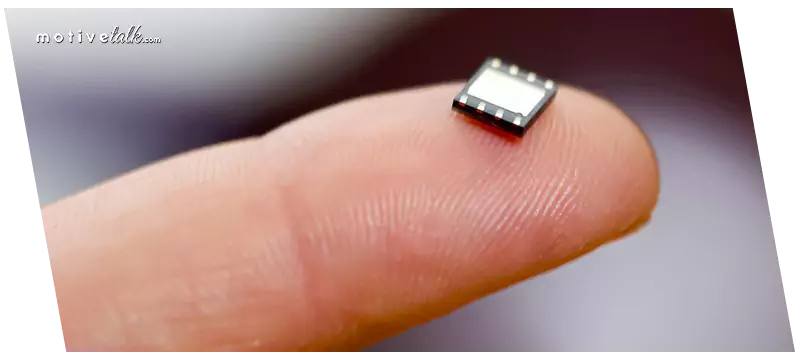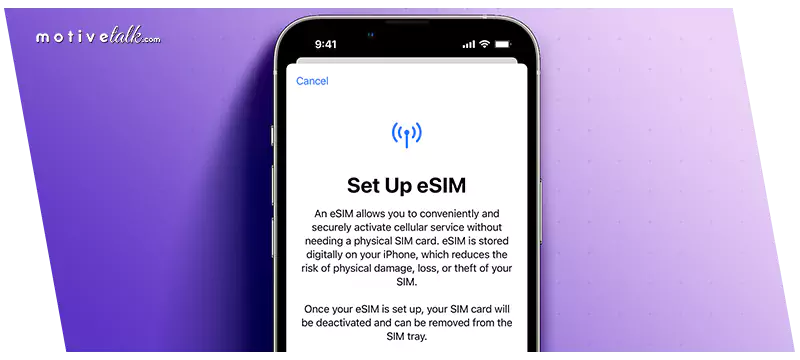Tech
Advantages And Disadvantages of Using an eSIM of 2023

Have you ever wondered what an eSIM is? Chances are that you did and are curious to know more about it. That’s why in this article, we intend to tell you what the advantages and disadvantages of using an eSIM are. So, read on.
With Apple’s latest announcement that iPhone 14 is about to eliminate physical sim trays entirely and adopt eSIMs, eSIM technology has become the talk of the town once again. While Apple is not doing anything groundbreaking by introducing an eSIM facility in their devices, it is the first brand to replace SIMs with eSIMs.
Till now, eSIM was kind of an alternative to secondary SIMs. However, Apple’s decision to give eSIM this much importance could make other brands follow suit. Before eSIMs become the new normal, you should get an idea of what is about to come. Therefore, below, we will discuss the advantages and disadvantages of using an eSIM.
eSIM overview
Before we jump right into discussing the advantages and disadvantages of using an eSIM, it is important to know what it actually is. The abbreviation “eSIM” stands for “Embedded Subscriber Identity Module.” What makes an eSIM different from typical SIM cards is that you can see and touch a traditional SIM, while an eSIM comes built-in with your phone. So you can’t see or touch it. It is pretty much like the internal memory in your smartphone. You can’t remove your device’s internal memory, but you can save your files and data on it.
Interestingly, you can change your eSIM operator anytime. But there’s a catch; not every smartphone supports the eSIM technology, only a handful do. Just like traditional SIMs, the telecom operator has to digitally activate an eSIM. Airtel was the first Indian telecom operator to support it. Currently, VI and Jio also support eSIMs. Some of the smartphones that are compatible with eSIMs are iPhone 13, iPhone SE (3rd Gen), iPhone XR, Oppo Find X5 Pro, Huawei P50 Pro, Google Pixel 6, etc.
Although some people think that an eSIM gives better signal strength or internet speeds, it is nothing but a wrong notion. It is just a digital copy of your regular SIM card. Remember that it is possible to use either an eSIM or a traditional SIM for a single number. Also, remember that you can’t swap an eSIM like you can in the case of a physical one. Plus, you have to inform your network operator every time you buy a new smartphone. And you won’t be able to pair your embedded SIM with both your smartphone and smartwatch simultaneously.
Benefits and drawbacks of using an eSIM
Now that you have acquired a good idea of the eSIM technology, let us see what the advantages and disadvantages of using an eSIM are. Just like any other technology, it has a fair share of both. Here are some of them:
Advantages of esim
First, we will take a look at some of the perks of using eSIM:
1. Easier activation than regular SIM cards
If you have a phone that comes with a built-in eSIM, the task of activating it is a cakewalk. In the case of a typical SIM card, one has to insert it into their device to activate it. This task requires steadiness. Or else, a displaced, even if slightly, SIM card won’t work.
An eSIM, however, is a different breed. All you have to do is simply scan a QR code, and your eSIM registration will take place. In some instances, you may have to enter a PIN to activate your eSIM. But that’s pretty much it! The maximum it will take to activate your eSIM is about 15 minutes.
2. Easier service provider switching
Another wonderful perk of using eSIM is that makes the process of switching service providers effortless. If you wish to change your physical SIM, you have to visit the store and buy a new plastic SIM card. Or, if you have ordered it online, you got to wait for a few days before your SIM arrives. But eSIMs don’t have any such hassles.
An eSIM lets you pick your desired service provider and then connect to that network from your home. This facility not only saves your valuable time but also makes the entire service provider switching process simpler.
3. Lesser space acquired inside smartphones
Currently, most contemporary phones use Nano SIMs that measure about 8.8 mm. These small SIM cards already take up very less space. Nonetheless, eSIMs measure only 4 mm, making them the tiniest available SIMs today. So, they acquire even lesser space inside smartphones.
This leaves some extra room for smartphone manufacturers to add useful features. These may include increased battery capacity or a more advanced CPU to boost a mobile phone’s processing power. Also, the elimination of a SIM card slot has another nice perk. It increases the water and dust resistance abilities of your handheld device by reducing the number of ingress points.
4. Multiple SIM profile facility
Just like in any phone that supports two SIM cards, a smartphone supporting eSIM allows you to have more than one SIM profile available to use anytime, anyplace. You don’t even need another mobile phone for that. Based on your smartphone’s capabilities, you may be able to use an eSIM switching between different carriers and networks at your will.
You can also use one physical SIM and one eSIM on your device for increased convenience (unless it’s iPhone 14). This can come in handy if you want to draw a line between your work and personal phone numbers. Or in cases where you are traveling and wish to use a local SIM.
5. Reduced damage or loss risks
As we already mentioned, eSIMs are not like your typical SIM cards – they come inbuilt with your device. Being non-removable, the risk of damaging or losing your eSIM is pretty slim. On the other hand, a traditional, removable SIM and tray are more vulnerable to these risks.
6. Better security
The adoption of eSIM technology also means greater security. In case your smartphone ever gets lost or someone steals it, nobody will be able to remove the SIM. Being embedded into your smartphone, an eSIM makes tracking and locating your device easier. Your network provider will be capable of accessing your eSIM remotely and assisting in such a situation.
Disadvantages of Esim
Now that you know the advantages, it’s time to get familiar with the disadvantages too:
1. Difficulty in transferring SIM
If you have a plastic SIM card and you wish to get a new phone, there’s nothing to worry about. All you need to do is store your data on your SIM, insert it into your new phone, and you’re all set!
However, that is not the case with eSIMs. After getting a phone with an eSIM, you got to retrieve your eSIM profile from the cloud and download it. Naturally, this process is way more time-consuming than transferring a traditional SIM.
2. Easier tracking
In today’s era, our personal data and privacy are facing an ever-increasing onslaught. Till now, individuals could simply remove SIM cards from their devices and get disconnected from that network.
However, with the introduction of eSIMs, they can’t do so anymore, as eSIMs come embedded into smartphones and are non-removable. Therefore, they will show as active on their carrier’s network. This is risky because such a thing makes tracking your device easier.
3. Hacking risks
While eSIMs are way more secure than regular ones since they are embedded and non-removable, they still have their share of flaws. Being more reliant on software, it can suffer from hacking attacks. Here’s how: the majority of your eSIM data is stored on the cloud or controlled by your network provider. This means if a hacker ever gets access to that cloud server, they can get access to your personal data as well.
4. Costs could be higher
As we said earlier, only some devices support eSIM technology, and all of them are high-end devices. These devices have the technology included in their service plans. However, if in the future, budget-friendly smartphones start adopting eSIMs, they might charge extra from customers for switching to eSIM from a regular one.
Conclusion of Advantages And Disadvantages of Using an eSIM
In this article, we talked about the advantages and disadvantages of using an eSIM. As you can see, eSIM technology has the potential to become something big. Nonetheless, it could become a disaster too. While Apple will eliminate physical SIMs completely with the upcoming iPhone 14 and others are likely to emulate them, eSIMs are not going to replace traditional SIMs anytime soon.
It is mainly because most low-end and budget phones today depend on physical SIM technology. Also, regular SIM cards have some useful benefits that eSIMs don’t currently offer. Maybe eSIMs will become the new normal sometime in the future. But for now, physical SIMs are here to stay. Let’s see what the future holds!
You may also read
-
Who is3 months ago
Who Is Fauzia Mubarak Ali? Famous Cat Stevens Wife & Their Children (Update: Jan 2024)
-
Comics9 months ago
Best Shrek Quotes About Life From The Shrek Series
-
Miscellaneous2 years ago
Lone Wolf Quotes – That Will Trigger Your Soul and Mind
-
Miscellaneous7 months ago
Warrior Quotes – That Will Make You More Stronger
-
Miscellaneous11 months ago
Top 27 Letterkenny Quotes – That Will Make Anyone Laugh
-
Super Hero2 years ago
Captain America Quotes – All Are Ultimate Leadership Quotes
-
Politicians2 years ago
Most Powerful Vladimir Putin Quotes – That Will Blow Your Mind
-
Miscellaneous2 years ago
Dalai Lama Quotes – That Will Change Your Values and Vision








































